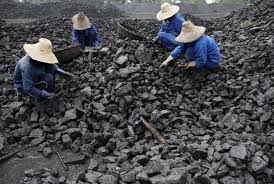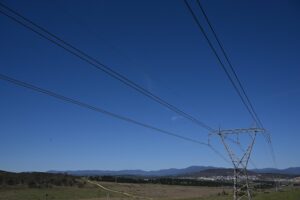 The reaction of the coal industry and its lobby groups to the recently released Chinese government restrictions on dirty coal use in key coastal regions reveals an industry in deep denial that the glory days of high prices and ever increasing exports to China are over.
The reaction of the coal industry and its lobby groups to the recently released Chinese government restrictions on dirty coal use in key coastal regions reveals an industry in deep denial that the glory days of high prices and ever increasing exports to China are over.
The standards themselves are reasonably straightforward.
From January 2015 China’s National Development and Reform Commission states it will prohibit the burning of coal with more than 16 per cent ash and more than 1 per cent sulphur in Pearl River Delta, the eastern Yangtze River Delta and three northern cities including Beijing, Tianjin and Hebei. The policy also bans domestic production and sale of lignite with ash content greater than 40 per cent and sulphur content of more than 3 per cent. The NDRC also set minimum limits on coal quality if it is to be transported more than 600 kilometres from either a mine or port.
Analysts’ estimates vary on the likely magnitude of the impacts of the measures and which nations and companies will be most affected, though just about all concede there will be some impact. Wood Mackenzie – long considered a super-optimist on all things coal – estimates that all up a total of approximately 105 million tonnes of coal imports could be affected by the new policy. They also estimated that – of that – approximately 80-90 million tonnes of coal from Australia, Vietnam, North Korea and South Africa exceeded the 16 per cent ash threshold with Australian coal the worst offender.
The Australian government’s own resources forecaster, the Bureau of Resource Economics is reported as estimating that the new measures would affect approximately 20 to 25 million tonnes of Australian coal.
The Minerals Council of Australia – which represents most of the coal industry – claimed that it is “confident” that there will be “no impact from these regulations.”
The restrictions on coal quality though, are just the tip of the iceberg. It is also reported that the Chinese government also wants to reduce coal consumption in key coastal areas by 20 million tonnes by the end of this year compared to last year. (One Australian analyst even put the figure as high as 40 million tonnes to be cut by the end of the year, with the possibility of cuts of ten million tonnes a month continuing into next year as well).
To add to the coal industry’s woes, the latest Chinese power generation data, released yesterday, revealed that in August power generation fell for the first time in four years. Compared to the same month the year before, coal-fired generation was down by more than 11 per cent.
The decoupling of economic growth from electricity consumption supports the argument that what is occurring is a structural shift in Chinese coal demand, not just a small cyclical downturn.
The fallout from dirty coal
While the precise impact of the new standards on coal exporters from Indonesia, South Africa, Vietnam, North Korea and Australia is not clear at this stage, the broad level effects are obvious. Less coal will be imported, for some existing coal producers costs will go up, thermal coal oversupply will increase and prices will be under even more downwards pressure.
The Chinese government is determined to press ahead with further restrictions on coal burning in heavily-populated coastal cities in an effort to improve air quality. The coastal centres are the very regions where most coal sourced from the international market is consumed so the impacts on the seaborne coal export market are potentially profound.
Since the January 2013 ‘airpocalypse’ the Chinese government has taken a series of steps to curtail coal burning in major cities and industrial centres. The restriction on imports of low-quality coal is just the latest move aimed at helping improve air quality.
However, current air quality in major cities is commonly many times higher than World Health Organisation standards. So improvements in air quality – as distinct from just preventing it from getting worse due to recentl- commissioned new coal plants and industrial projects – will require many more measures to reduce coal burning in the coming years.
If the global coal market is already destabilised by China’s measures to curb coal just 18 months after the ‘airpocalpyse’, it will only get worse when a suite of other measures – from coal plant closures to a carbon price, to the rapid deployment of renewables – really start to bite. If the coal industry is in a panic over these latest measures they should bear in mind that the worst is yet to come.
The mooted reduction of 20 – 40 million tonnes of coal burnt will inevitably have a spillover effect of pushing prices down at the very time that many coal exporters are already losing money.
For producers caught by the new restrictions on high ash content, costs will go up. To meet higher ash standards, coal producers can wash the coal but that costs more. Estimates of how much it costs vary.
In a global commentary article on coal washing the International Energy Agency used a broad-brush figure of US$5 a tonne. Commenting on the latest China policy Tim Buckley from Institute of Energy Economics and Financial Analysis estimated that it would be in the range of US$3-5. John Rolfe, resources economist at Central Queensland University told The Guardian that he estimated it would cost more than US$9 a tonne.
In a note to clients, Wood Mackenzie put the figure at approximately A$16 a tonne and a range of $1-27. It also pointed out that as most Australian exporters have take-or-pay contracts with rail and port companies any reduction in volume would increase the cost for what was exported.
Even if there are uncertainties about how the policy will be implemented, the uncertainty alone imposes a heavy cost on the industry. For banks, superannuation funds and financial institutions which are already feeling the heat from divestment campaigns over their fossil fuel investments, the latest Chinese policy announcement dramatically underscores the increasing risk of supporting new projects in a rapidly changing energy landscape.
Finally, buried behind the Chinese policy announcement is a confronting message for coal exporting nations: ‘We don’t want your dirty coal because it is killing and harming our people’.
The coal industry and their supporters have long argued against domestic and global policies to cut greenhouse gas emissions claiming that there is little point until countries such as China do. Now that China is taking action, the rhetoric of the coal exporting nations is left exposed.
For the public – especially in Australia which has long prided itself in being a leader in preventative public health measures – there is an unpalatable reality to confront: are we really a nation which is prepared to keep supporting an industry which sells a product which kills and harms people where it is burnt?
Bob Burton is a Contributing Editor of CoalSwarm and a Director of the Sunrise Project, a non-profit group promoting a shift away from fossil fuels. With Guy Pearse and David McKnight he co-authored Big Coal: Australia’s Dirtiest Habit. Bob Burton’s Twitter feed is here.








